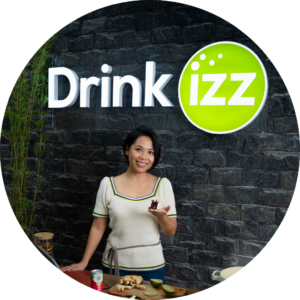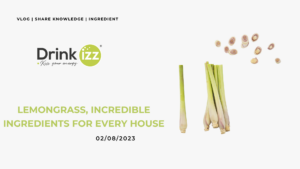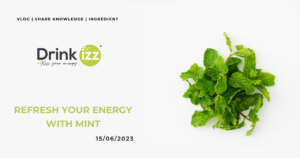We all have a strong need to share and connect, and one of the easiest means of connection between people is food. It is a language that is easy to understand and is widely spread without trying to translate into different native languages. Let’s imagine that you are sitting at a table with different people from around the world, so the simplest way to introduce culture is for each person to give a different interpretation of a dish’s ingredients. Even though the ingredients and the cooking method are the same, each person’s connection with the ingredients and mother nature of .each person depends on that person’s culture, emotions, and spirit.
A dish, no matter how perfectly prepared, cannot bring out a unique feeling without good ingredients. Therefore, it is not wrong to say that the ingredients themselves represent the identity of the dish and the country’s culture. However, for people with today’s busy lifestyles, how many people find connection through food culture? The reason is very simple: the ingredients you eat no longer have a connection with mother nature, or people make it, but were born from laboratories with “simulated” recipes look like real ingredients. Let’s find out with me then!
1. What is the definition of food ingredients?
That’s all the things you use in the process of making different foods.
For centuries, ingredients have served useful functions in a variety of foods. Our ancestors used natural ingredients such as salt to preserve food, added herbs and spices to improve the taste of food, and used sugar and vinegar to preserve fruits and vegetables. .
Today, modern consumers are more demanding, wanting to enjoy a food supply that is tasty, nutritious, safe, convenient, colorful and affordable. Therefore, there are “food additives” to increase more flavor, of course, with other effects which are not good for health.

2. How do consumers know the food ingredients?
Food manufacturers are required to list all ingredients in a food on a label. Usually, on the product label, the ingredients will be listed in the following order:
- The ingredients used in the most quantity first
- Then in descending order the ingredients with less quantity.
- The label must list the name of any food additives that are compliant with food hygiene and safety legislation in the distribution market.
However, some ingredients currently can be collectively listed as “flavors”, “seasonings”, “artificial flavors”, or in the case of exempt color additives, “artificial colors”, which do not name each ingredient. In addition, a declaration of a hazardous ingredient in a single or synthetic color, flavor or spice can be accomplished by simply naming the allergen in the ingredients list.
And as a result, the consumers are anxious because they can’t fully understand complex unfamiliar chemical compounds.

3. What is the difference between natural ingredients and artificial ingredients?
Natural ingredients are derived from natural sources, for example: sugarcane provides sugar to sweeten foods, or hibiscus flowers provide red color to redden foods and drinks. Other ingredients are not found in nature and therefore must be manufactured synthetically as artificial ingredients. In addition, some ingredients found in nature are now being artificially produced with the aim of being more cost-effective than their natural counterparts.
For example, vitamin C or ascorbic acid can be derived from oranges or manufactured in a laboratory. These food ingredients are being used in the market in accordance with national standards, but their effects on human health have not been clearly studied.
With a rapid population growth rate from 48 million people in 1975 (year of independence) to 97 million people in 2019 and 106 million people in 2030, Vietnam becomes the 14th country in the world representing one of the the most important market for necessities (food and beverages). (1) (2) (3)
Vietnamese consumers (especially urban 35% of the population) are becoming more and more sensitive about the health consequences of toxic foods and products caused by diabetes, high blood pressure and cancer. out. (1) (2) (3)
Cancer rates are constantly increasing with the risk of getting cancer before age 75: 14.5%/100,000 cancer-related deaths each year. (4)
So, choosing natural or artificial ingredients is not a difficult question to answer for smart consumers.
4. How does the quality of a naturally produced ingredient differ from that of an artificially produced ingredient?
Let’s take the example of a basic ingredient in a dish that comes from poultry. Vietnamese people like to eat chicken very much, so no matter how poor a family is, every offering tray in worshipping tradition never lacks a chicken.
When it comes to chickens, quality is something to distinguish at the stage of raising before making the dish. If the chicken is raised in the garden with a rich source of nutrients, the chicken will be different from the commercial chicken that is fattened with genetically modified corn, and injected with antibiotics. Natural chicken will be rosy, fragrant, sweet, chewy with muscles, not dry, pasty and yellow like industrial chickens.
So, even not to mention the cooking process, you have seen that the source of natural ingredients will determine the quality of the food and satisfaction of consumers.
5. The quintessential ingredients from Drinkizz
Understanding the basic needs of consumers, Drinkizz has created O.N.E drink with “10 Magic Ingredients” coming from the forests and highland mountains areas. Each ingredient was grown organically suitable to the soil and local climate. We harvest only in the best season and cool dry the fresh ingredients to keep their “Essential Flavors and Nutrients” before cooking process.

Source:
(1) https://www.populationdata.net/pays/viet-nam/
(2) CIA Factbook
(3) https://www.globalforestwatch.org/dashboards/country/VNM






